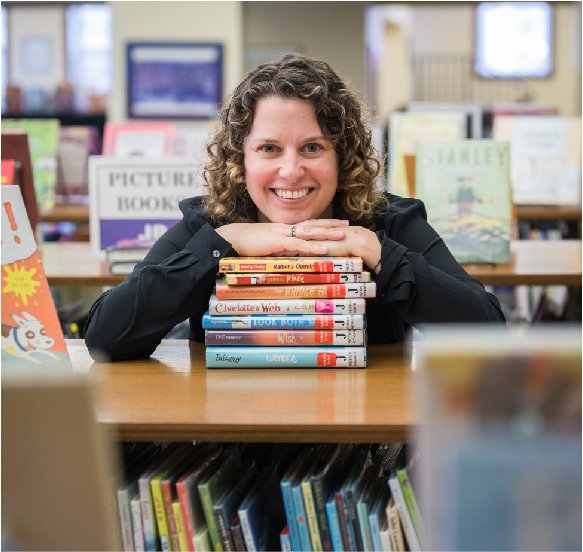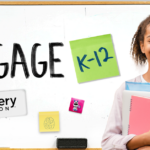By Dr. Molly Ness | Originally published in Equity & Access Pre K-12
Imagine, for a moment, that you are 9 years old. You’re ready to snuggle up with a book of your choice. Only, there are no books to be found in your home and your closest public library involves a lengthy cross-town bus ride. Your school library is full of dusty old books, and your classroom library is sparse. Your town has no independent bookstore. Your simple quest for a book is a reminder of the inequity you face.
Unfortunately, this hypothetical scenario is a reality for too many American children. Thirty-two million young readers live in book deserts, high-poverty geographic areas that lack reading material. The International Literacy Association provides the following definition for book deserts:
Underresourced or underserved areas and homes with little access to written materials. The term was coined by Unite For Literacy in 2010 and popularized in 2016 by Susan B. Neuman and Naomi Moland, who used it in the title of an article published in Urban Education about their study on how the lack of access to printed reading material among low-income and poverty-stricken neighborhoods impacts early childhood development.
The data around book deserts is staggeringly bleak:
• 45% of children in the U.S. live in neighborhoods that lack public libraries and stores that sell books or in homes where books are not present.
• Two-thirds of schools in the U.S.’s lowest income neighborhoods can’t afford to purchase books at retail prices.
• In high-income communities, there are about13 books for every child; in high-poverty communities there is one book for every 300 children (Neuman & Celano, 2001)
• In Washington D.C’s Anacostia neighborhood (poverty level of 61%), 830 children would share a single book, whereas children in Capitol Hill had 16 times as many books (Neuman & Moland, 2019).
• Families with incomes of $100,000 or more have nearly twice the amount of books than families with less than $35,000 in annual income (125 vs. 73), and Hispanic and Black children have fewer books in their homes than white, multi-racial, Asian or children of other racial backgrounds (Scholastic, 2019).
The Impact of Book Deserts
When books are not readily available, there are dire consequences. As Neuman and colleagues (2019) explain, book deserts constrain young children’s opportunities to start school ready to learn. Without books, children miss out on chances to acquire vocabulary, content knowledge, and a myriad of literacy skills. In book deserts, children may miss out on the vast socioemotional benefits that comes from adult-child reading interaction. We cannot expect our children to become readers unless they have ample access to high-quality, engaging, and diverse books.
The Work to End Book Deserts
Fortunately, in our nation’s urban and rural pockets, there are innovative literacy warriors who work to end book deserts. Since 2019, the End Book Deserts organization has featured over fifty people / programs who work tirelessly to get books to kids and to build sustainable reading culture. some people focus on providing book access to specific geographic areas, while others look to serve overlooked populations (such as children in the foster care system, children in juvenile detention centers, and children who might go without bedtime stories because of incarcerated parents). Programs range from one individual who has converted a dilapidated school bus into a mobile library (like in Big Rockin’ Book Bus) all the way to extensive networks like the Dolly Parton Imagination Library and Reach Out and Read. Despite differences in funding, programming, and populations served, every program shares an important similiarity: a tireless commitment to getting books into the hands of young readers.
Here are a few of my favorite organizations:
- United Through Reading enables deployed parents to send personalized video recorded readings (and their accompanying books) home to children. Similar programs exist for students with incarcerated parents, such as the Women’s Storybook Project of Texas.
- All across the country, laundromats are being transformed into literacy centers. A collaboration between the Laundry Cares Association and Too Small to Fail has succeeded in engaging young children in up to 47 minutes of literacy-based activities as parents / caregivers wash and dry clothing.
- Books banks – staffed by volunteers – help sort and deliver books, like at the Illinois-based Bernie’s Book Bank, San Francisco’s Children’s Book Project, the Maryland Book Bank (who loads a van full of book and local NFL players into book deserts), and teacher-created New Jersey-based Book Smiles.
- Jet Blue’s Soar With Reading has stocked $3.5 million of books into free vending machines in urban areas. Strategically placed in visible locations in low-income areas, these vending machines enable young readers to get an unlimited number of free, brand new books – donated by popular publishing companies.
How You Can Help #endbookdeserts
We all play a role in the collective work to increase book access – regardless of whether you live in an area flooded with books or in a community that qualifies as a book desert. Too many people simply are unaware of the presence and impact of book deserts. In your community, you might inspire local business, churches, and organizations to begin a book drive. You might donate to larger networks like Dolly Parton’s Imagination Library or Reach Out and Read. When time allows, you might volunteer to sort books at a community book bank. You might rally your local public library to elimate late fees, which penalize economically disadvantage patrons. With the support from the Urban Libraries Council, major cities like Chicago, Phoenix, and Dallas have scraped late fees – only to discover a significant increase in both patronage and overdue materials.
Classroom teachers must send books home – on weekends, school breaks, and summer vacation. We must be generous with the resources that line our classroom and school libraries, and give up the fear that some of these books might not make their way back. Literacy guru Donalyn Miller says, “I’d rather lose a book than lose a reader.” Empty shelves can be replenished by programs such as First Book and Donors Choose. I know teachers who ask their friends and family to purchase books from their Amazon wishlist in lieu of gifts for the holidays or birthdays.
Fostering Book Culture
Providing our students with access to books is the first crucial element in creating lifelong readers; the next vital step is to foster book culture. To create book culture, teachers and school leaders must showcase their reading practices, talk about their reading choices, and facilitate spaces and conversations that highlight the joy and importance of reading. We create book culture in our classrooms when we display the covers of the books we are reading, when we invite authors to discuss their craft, when we excitedly book talk new releases and important reads, and when we create welcoming spaces that invite students to read and discuss books.
We foster lifelong reading when we grant students choice of what to read, build rich classroom libraries with diverse and engaging texts, and create authentic ways for students to respond to the books they’ve selected. Teachers, school leaders, and librarians might start a chapter of ProjectLit, which provides high-quality, student-selected books worthy of discussion. To end book deserts, we must envelope our students in communities and conversations where reading is a constant presence.
Get Involved
Ultimately, we must see access to books as a right – and not a privilege. As access to books is a fundamental equity issue, we must work tirelessly to ensure that all children have books When teachers come together – across both book deserts and book floods – all children increase the likelihood of becoming lifelong readers. For more information, visit www.litequity.com, or listen to the End Book Deserts podcast.

Molly Ness is a former classroom teacher, a reading researcher, and a teacher educator. She is the author of four books and spent 16 years as an associate professor at Fordham University. In 2019, Molly began the End Book Deserts podcast to bring attention to the issue of book access and equity. Molly serves on the Board of Directors for the International Literacy Association In 2022, Dr. Ness joined Learning Ally as the Vice President of Academic Content.
The American Consortium for Equity in Education, publisher of the "Equity & Access" journal, celebrates and connects the educators, associations, community partners and industry leaders who are working to solve problems and create a more equitable environment for historically underserved pre K-12 students throughout the United States.
- American Consortium for Equity in Educationhttps://ace-ed.org/author/admin/
- American Consortium for Equity in Educationhttps://ace-ed.org/author/admin/April 23, 2025
- American Consortium for Equity in Educationhttps://ace-ed.org/author/admin/
- American Consortium for Equity in Educationhttps://ace-ed.org/author/admin/







